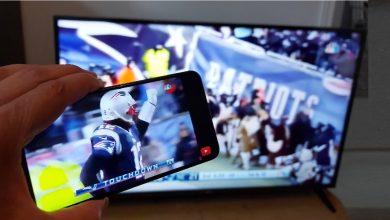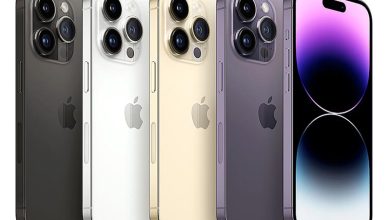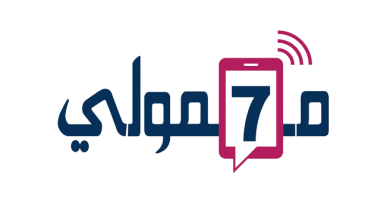Why Digital Detox is Essential?

We’re living in a paradoxical age. The same devices that keep us connected, informed, and entertained are the ones that contribute to our rising stress levels, sleep disorders, and mental health challenges. We’re talking, of course, about the need for a digital detox—an intentional break from screen time to help us reset our minds and bodies. This article delves into why it’s crucial, the health pitfalls of tech overuse, and how, ironically, your smartphone can be your ally in this journey.
Digital Detox Explained
Digital Detox: A Necessary Shift in Modern Tech Trends
In our tech-saturated world, it’s tough to escape the allure of smartphones, tablets, and computers. They’re incredible tools, but let’s face it, sometimes they turn into digital leeches, draining our time and energy. That’s why the idea of a digital detox is catching on. It’s not about shunning technology; it’s about taking a conscious break to escape the endless notifications and social media updates that keep us glued to screens.
Taking a step back from this constant digital buzz does wonders for your mind. It gives you a chance to pause and recharge, freeing up mental space you didn’t even know you needed. You’ll find yourself more focused and even more creative when you’re not continually splitting your attention between tasks.
And let’s not forget about the people around us. When screens dominate our focus, we miss out on real human interaction. A digital detox lets us put our devices down and engage in good old-fashioned face-to-face conversations. Suddenly, our relationships feel more authentic and meaningful because we’re fully present.
But, breaking free from digital distractions isn’t as easy as it sounds. Our instinct is to grab our phone the moment we have some free time. The good news? There are apps designed to help us control our screen time. Tools like Freedom or StayFocused can restrict your internet use, making it easier to use your digital devices in a more intentional way. Here are some tips on starting your first digital detox:
- Decide the duration of your detox. It could be as short as an hour, long as a weekend, or for more ambitious individuals – an entire week.
- Set specific guidelines on what is considered acceptable usage. Clearly specify what is out-of-bounds – social media, emails, or non-essential browsing.
- Communicate your detox plans to friends, family, and colleagues so they know how and when to reach you during this period.
- Prepare yourself with other activities to fill the void. It could be reading, sports, or spending time with loved ones.
- Switch off notifications or use apps like Freedom or StayFocused to curb distractions.
- Curate a peaceful environment free of digital temptations.
As technology enthusiasts, it may seem paradoxical to advocate for a temporary separation from our beloved devices. However, the essence of a digital detox is not to criticize or abandon technology, but to achieve a balanced relationship with it. Technology is an instrumental tool that has transformed and simplified numerous aspects of our lives, but it’s crucial that we don’t let it overwhelm our existence. Embrace a digital detox as an opportunity to regain control, recalibrate, and refresh your perspective on the digital world.

The Double-Edged Nature of Our Digital Lives
In a world where we’re almost surgically attached to our screens, it’s hard to remember that these gadgets can be a double-edged sword. Sure, they’re invaluable tools for communication and information, but let’s not overlook the downside. Spending too much time staring at screens isn’t just bad for your digital life; it can have real-world repercussions too.
The Physical Toll of Screen Overuse
Healthwise, staring at a screen all day isn’t doing any of us any favors. From eye strain and headaches to the aches and pains that come from slouching over a keyboard or phone, there’s a laundry list of physical issues tied to too much screen time. And let’s not forget how it messes with our sleep. The blue light from screens confuses our brains into thinking it’s daytime, messing up our sleep patterns.
The Cognitive Cost: More Than Just a Distraction
But it’s not just about physical health. Ever notice how hard it is to concentrate after a long stint in front of a screen? That’s no coincidence. Too much screen time can mess with your focus, make it tough to remember things, and generally make you less productive. Plus, it eats into the time you could be doing other, healthier things, whether that’s going for a run, diving into a good book, or just chilling out.
Mental Health Implications: Beyond the Screen
And we haven’t even touched on the mental health aspect. There’s plenty of research showing that excessive screen time, especially on social media, is linked to higher levels of anxiety, depression, and loneliness. And the constant influx of news and notifications? That’s a recipe for stress and mental burnout.
Solutions: Making Tech Work for You
The good news is, there are ways to make tech work for you, not against you. Setting aside times to be screen-free, using blue light filters, and taking regular breaks can all help. You can also use the tech itself to track and cut down on your screen time. Both iOS and Android have built-in features that show you how much time you’re spending on your device and what you’re doing with it.
The Path to Digital Balance
So, in a world where going completely screen-free isn’t really an option, the key is balance. Being aware of how much time you’re spending on your devices—and what it’s doing to you—is the first step to a healthier relationship with tech. Remember, these gadgets are here to make our lives easier, not to rule them.

Smartphones: The Unlikely Heroes in Your Digital Detox Journey
You might find it surprising, but your smartphone can actually be your best friend when it comes to taking a digital detox. Yes, the same device that keeps you hooked can also help you unhook. Let’s dive into how you can flip the script on your smartphone addiction.
Making Built-In Features Work for You
Your smartphone comes loaded with features that can help you manage your time better. Think about setting timers to remind you to look away from the screen and give your eyes a break. Or set reminders that nudge you to step outside and take a walk. You can also use the ‘Do Not Disturb’ setting to help carve out focused family time or ensure you get a good night’s sleep without interruptions.
Specialized Apps for Mindful Tech Use
There are tons of apps designed to help you use your phone in a more mindful way. These apps can block other apps, track your screen time, or even remind you to put down your phone. Basically, they act like your conscience, nudging you to make better choices when it comes to how and when you use your device.
Automation: Work Smart, Not Hard
Another smart use of your smartphone is automating tasks that would otherwise take up your time and attention. For instance, you can set up automatic bill payments or even automated email responses. This way, you’re not only reducing your screen time but also freeing up mental space for other, more meaningful activities.
Tracking Your Progress for Accountability
Part of the detox process is keeping tabs on how you’re doing, and your smartphone can help with that, too. Many apps provide detailed analytics of your screen time, giving you a clearer picture of where you need to cut back. You’ll have a set of data to refer to, helping you adjust your goals and keep you motivated.
Closing Thoughts: Digital-Physical Balance
In a world overflowing with digital distractions, finding a balanced approach to screen time is crucial for our well-being. While it might seem odd to use the main offender, your smartphone, as a tool for detox, remember that a tool is only as good or bad as the person using it. By being mindful and strategic, you can turn your smartphone into an ally in your quest for a healthier, more balanced digital life. After all, the aim is not to demonize technology but to find a way to coexist with it in a way that enhances, not hinders, the quality of our lives.




